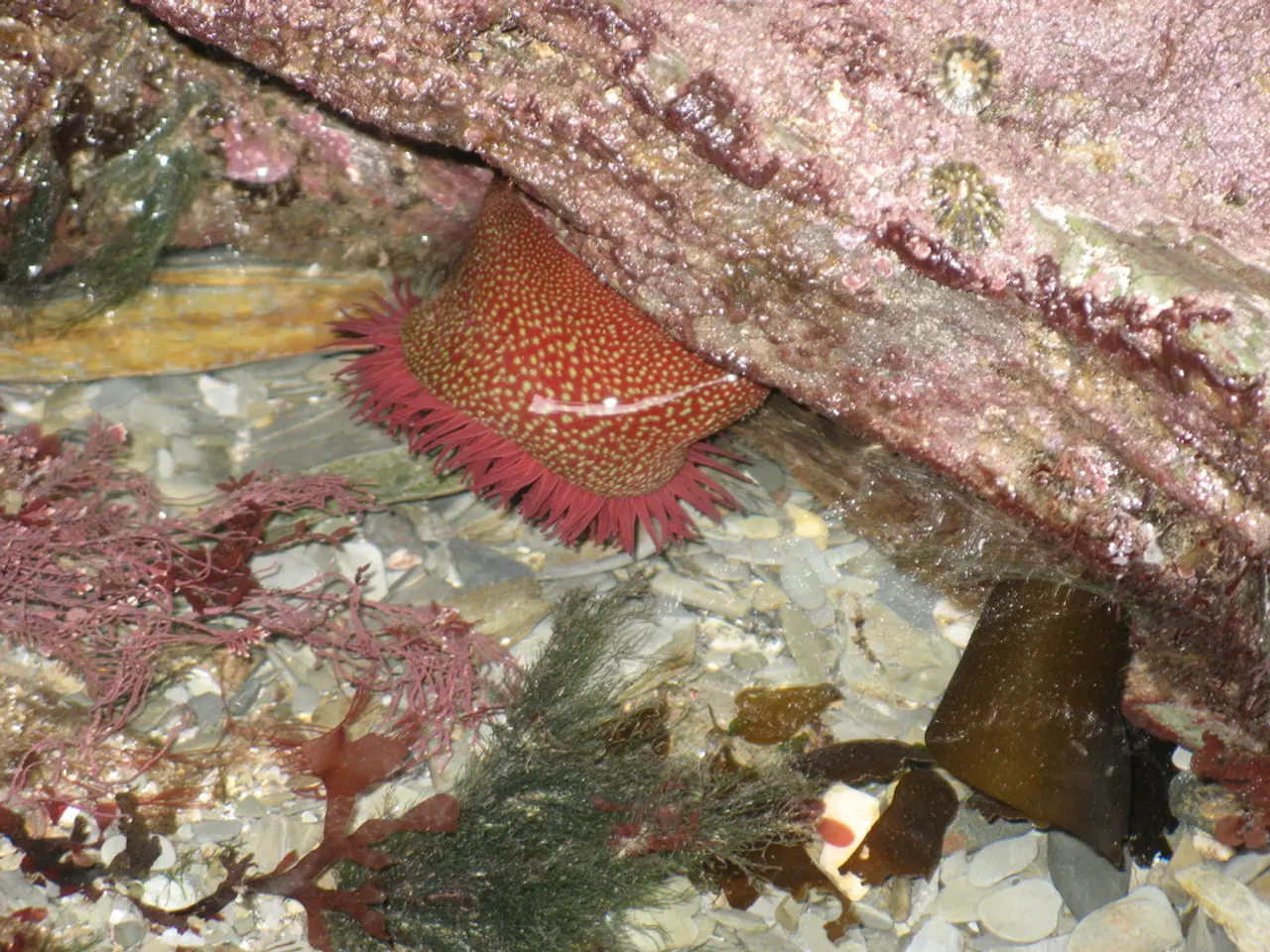Exploring Rock Pebbles on Coastal Shores: Identifying Valuable Specimens and Beach Locations
Ocean beaches are not just beautiful stretches of sand and water, they are also treasure troves of geological wonders. From common clastic sedimentary rocks to intriguing fossils, a stroll along the shore can be a fascinating exploration of Earth's history.
Clastic Sedimentary Rocks, composed of rock fragments such as quartz, feldspar, clay minerals, or mica, are one of the most common types found on beaches. These rocks, which include conglomerates, sandstones, and mudrocks, are formed through the cementation of these clasts and can provide valuable insights into the geological history of the area.
Lithic sand, rich in rock fragments, is another interesting find. This sand may contain metamorphic, igneous, or sedimentary rock fragments, such as amphibolite, sandstone, quartzite, chert, and schist. These sands are a testament to the diverse geological past of the region.
Fossils are another captivating aspect of ocean beaches. Ammonites, coiled cephalopod shells, are commonly found along the Jurassic Coast in the UK. Fossilized coral, often preserved in sedimentary rocks, can be found in many beaches, particularly in Florida. Shark teeth, well-preserved and still sharp, are a common find in Englewood Beach, Florida.
The types of rocks and fossils found on beaches are significantly influenced by factors such as wave climate, tide range, and beach morphology. Wave-dominated beaches may have more erosion, revealing deeper layers of rock and potentially revealing fossils. Tide-dominated beaches, on the other hand, may have less erosion but still deposit new material regularly.
To maximise your chances of finding rocks and fossils, it is recommended to visit during the low tourist season and during low tides. Wearing appropriate clothing, such as rain gear, rain boots, a hat or rain hood, gloves, and warm clothing, is also advisable for comfort.
Before heading out, it's important to know the local laws and regulations regarding what can and cannot be taken from the beach. The NOAA website provides tide tables for every state in the US with ocean beaches.
Scanning for treasures on a beach can reveal more than just rocks and fossils. Agates, jasper, hag stones, petrified wood, unique driftwood, and seashells are among the other treasures that can be found. Agates, translucent gemstones with beautiful color patterns and banding, are structurally speaking a banded form of finely-grained, microcrystalline Quartz. Jasper, a variety of Chalcedony, is usually brown, yellow, or reddish in color, and often multicolored with unique color patterns.
Concretion fossils, often round with light colored stripes or markings, can contain fossils of a variety of shells, shark teeth, or even bone. Sea glass, formed from glass containers that have been dumped at sea or washed out from the shore, is appreciated for its historical and environmental significance.
In conclusion, ocean beaches offer a wealth of geological and historical treasures for those who take the time to look. With a little knowledge and the right equipment, a day at the beach can become a fascinating adventure in rockhounding.
- Engaging in a day at the beach can lead to enjoyable discoveries beyond mere relaxation, as one may stumble upon various geological treasures such as fossils, rocks, and minerals like agates and jaspers.
- The diverse range of finds can include unique items like concretion fossils, petrified wood, and seashells, adding an extra layer of intrigue to one's beach lifestyle.
- For avid rockhounds and history enthusiasts, ocean beaches can also serve as a rich source for learning about a region's geological history and past, making a day at the beach a combination of vacation, delightful exploration, and educational adventure.





